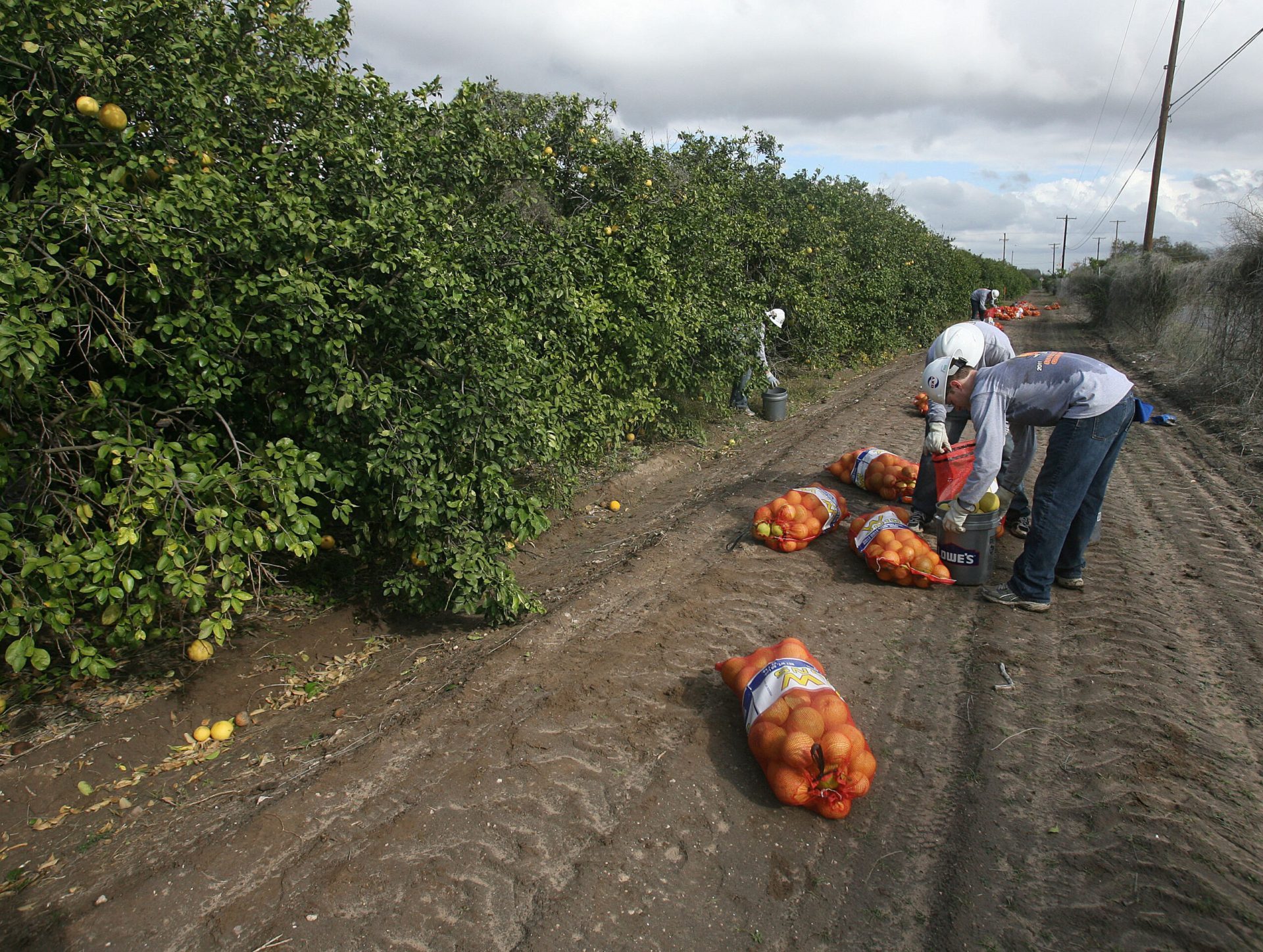Many Texans are still feeling the effects of last year’s winter storm that left a greater portion of the state without power, killed 246 people and decimated local industries. The Rio Grande Valley’s agriculture community was not the exception.
According to a study conducted by the Texas A&M AgriLife Extension Service, it’s estimated that the February 2021 freeze caused $230 million in damages to the Texas citrus industry. But while the situation was dire at the time, there’s plenty growers can do to protect their crops should another freeze strike.
Mani Skaria, founder and CEO of U.S. Citrus in Hargill and professor emeritus in the Texas A&M system, knows what to do and spoke last week about how the industry has evolved one year after the storm.
According to Skaria, it first helps to know the history.
On Dec. 18, 1983, Texas experienced one of the most severe cold snaps in history with water temperatures dropping to a freezing 28 degrees Fahrenheit reaching all the way to Northern Mexico.
The ‘83 freeze is said to have caused tens of millions of dollars in damages to the agriculture and farming industries, which is why Skaria uses this event as an example of how the industry adapts to the changing climate.
“If you look at the production with the cultural practices and good management tactics, we produced the same amount of fruit before ‘83 and after, so we have become more efficient,” Skaria said.
In 1989, when Skaria was a professor at Texas A&M, the state experienced another cold wave that had Brownsville experiencing temperatures that dropped to 16 degrees and left the upper coast in single digits.
“We have no control over climate change, that is going to happen, so we have to adapt to what the climate is going to be,” Skaria said. “Fortunately, we know in advance when the temperature is going to be low and there are protective aspects that we can take care of.”

One of the methods used during the ‘83 and ‘89 events is what Skaria calls soil banking, which is when laborers and growers used the soil to cover the tree’s stem in order to protect it from the harsh temperatures.
Skaria explains that keeping the tree a few degrees warmer could help save it and though one might lose the fruits or a few branches, they can be cut off in order for the tree to keep growing more and continue producing fruit.
A grower may lose their fruit for one year, but fruit insurance can minimize financial losses.
“Another one which we don’t practice here but I plan to implement is to plant some very adaptable plants to use a windbreak,” Skaria said. “For example, the use of bamboo trees that are not spread but contained.”
Bamboo can grow up to 60 feet tall and bend with the wind rather than break like some plants used as windbreakers, such as the pine trees in Florida.
Skaria said his company is already in the process of growing bamboo to help combat future cold snaps or other natural disasters. He plans on using the bamboo as an artificial wall to section off the several types of produce his company grows.
“It’s not going to protect the crops 100%, but it will reduce the impact [from severe cold weather],” Skaria said.
The last preventive measures Skaria shared are a few which are already being implemented by his company: planting at a higher density as well as spraying warm water on the plants during a freeze.





